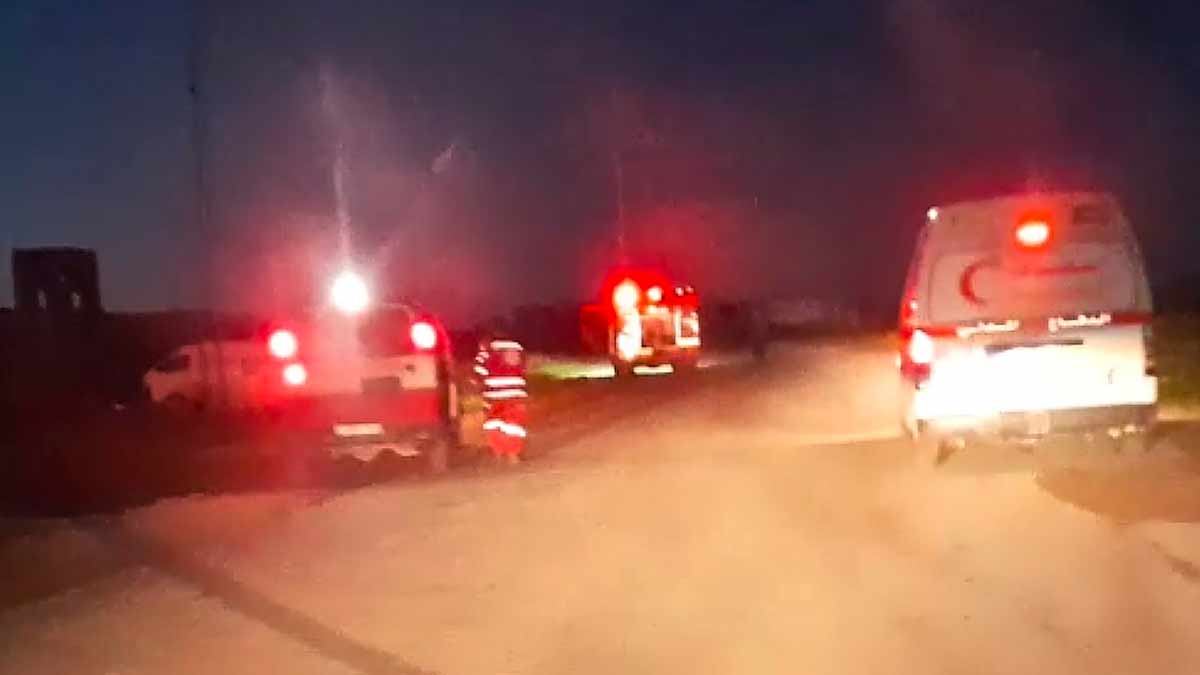Israel admits errors in Gaza paramedic killings, dismisses army commander
 Screengrab from the video footage of Palestinian paramedics killed in Rafah | AP
Screengrab from the video footage of Palestinian paramedics killed in Rafah | AP
The Israeli military has acknowledged major lapses during a deadly attack last month, which claimed 15 lives, including that of eight Red Crescent paramedics, six civil defence workers and a United Nations employee in Rafah, southern Gaza. The incident on March 23, which sparked international outrage and accusations of war crimes, prompted an internal investigation that revealed "several professional failures" and breaches of protocol. It has led to the dismissal of the deputy commander of the Golani Brigade of the Israel Defence Forces. Another senior officer will face censure.
The incident took place during a pre-dawn operation in Rafah’s Tel Sultan neighbourhood, where Israeli troops were conducting a combing operation. Around 2:30 am, soldiers from the Golani Brigade’s reconnaissance unit, operating under the 14th Armored Brigade, set up an ambush to monitor and intercept potential threats from Hamas, which Israel says is using civilian infrastructure, including ambulances, to transport weapons and operatives.
The soldiers spotted an approaching vehicle, which they mistook for a Hamas vehicle, and they opened fire, killing two people inside. They detained the lone survivor, but he was released in the morning after obtaining confirmation that he was not a Hamas operative. Later, other vehicles, including several ambulances and a fire truck, passed through the ambush site unharmed, suggesting that the soldiers were not indiscriminately targeting civilians.
The situation, meanwhile, turned worse at around 5am when drone operators alerted the Golani unit to the arrival of a convoy of vehicles. Due to poor visibility and communication failures, the troops failed to identify these as emergency vehicles belonging to the Palestine Red Crescent Society and Gaza’s Civil Defence. The convoy, consisting of ambulances and a fire truck, stopped approximately 20 metres from the ambush point. Paramedical staff and rescue workers stepped out to assist those in the ambulance that was attacked earlier.
The deputy commander of the Golani Brigade thought the paramedics posed an immediate threat as he was hampered by poor visibility and he ordered his troops to open fire. For three minutes, the soldiers continued firing at the rescue workers. Only upon reaching the vehicles did they realise they had killed unarmed medics and civil defence personnel.
A few minutes later, a United Nations pickup truck entered the area. Despite recognising it as a UN vehicle, the troops fired on it, killing an employee of the UN Relief and Works Agency (UNRWA). The IDF later admitted this was a direct violation of protocol. They then gathered the bodies of the 15 victims, covered them with sand, and marked the site for later recovery. The IDF said this was done to protect the bodies from animals, a practice they claim was routine. However, the troops also used a bulldozer to crush the vehicles after pushing them off the road. The military has since admitted that while moving the vehicles was permissible, destroying them was a grave error.
The IDF said there was no attempt to hide the incident, as the UN was promptly informed. However, the deputy commander’s initial report to his superiors was short on details about the attack on the UN vehicle and the circumstances leading to the attack. This failure to fully disclose the events contributed to the IDF’s decision to dismiss him.
The IDF investigation was led by Maj. Gen. (res.) Yoav Har-Even of the General Staff Fact-Finding Assessment Mechanism, who concluded that the incident stemmed from an “operational misunderstanding. The report mentioned several professional errors, such as misidentification of the non-combat vehicles, breach of protocol and poor visibility that hurt decision-making. It also blamed the deputy commander for providing incorrect information initially.
The investigation, however, found no violation of the IDF’s code of ethics and there will be no criminal action against the involved units. The report claims six of the 15 victims were Hamas operatives, a claim the Palestine Red Crescent has denied.
Major General Yaniv Asor, head of the Southern Command, approved the dismissal of the deputy commander and the censure of another senior officer for their roles in the incident. IDF Chief of Staff Lieutenant General Eyal Zamir approved the punitive measures. Last year, the IDF similarly dismissed two officers following the killing of seven World Central Kitchen aid workers, indicating a pattern of disciplinary action in high-profile cases.
The killings triggered widespread condemnation, with the UN and human rights groups describing the attack as a potential war crime. The IDF covering the victims’ bodies in a mass grave and trying to destroy their vehicles hinted at a cover-up. And those allegations were further bolstered by the recovery of video evidence from a deceased paramedic’s phone showing the emergency vehicles’ lights flashing before the attack. The IDF had initially claimed that the convoy was moving suspiciously without signals.
The incident demonstrates the challenges of urban warfare in Gaza, where distinguishing between combatants and civilians is often next to impossible. The IDF maintains that its troops were on the lookout for Hamas threats, citing the group’s alleged use of ambulances for military purposes. Yet, the ones who paid with their lives were unarmed medics and a UN worker highlighting the possibility of misjudgments in such urban war settings.
Middle East